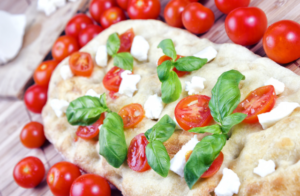Finally! How To Keep Your Pork Tenderloin From Drying Out – The Answer Is Simple And Delicious!
What To Know
- Roasting pork tenderloin in a preheated oven is a gentle and effective method of cooking that yields tender and juicy results.
- Place the meat on a roasting rack and cook it at a moderate temperature (325-350°F) until it reaches an internal temperature of 145°F.
- Sous vide cooking involves sealing pork tenderloin in a vacuum-sealed bag and cooking it in a temperature-controlled water bath.
Pork tenderloin, a lean and delectable cut of meat, has the potential to tantalize taste buds with its inherent tenderness and juicy flavor. However, the delicate nature of this cut makes it susceptible to dryness, a culinary nightmare that can transform a promising meal into a chewy disappointment.
Understanding the Causes of Dryness
Before embarking on our quest to keep pork tenderloin moist, it’s essential to understand the factors that contribute to its dryness:
- Overcooking: Exposing pork tenderloin to excessive heat for prolonged periods will inevitably lead to moisture loss and a tough texture.
- Improper Searing: Searing the meat too aggressively can create a tough exterior that traps moisture inside, resulting in an unevenly cooked dish.
- Insufficient Seasoning: Seasoning pork tenderloin not only enhances its flavor but also helps to retain moisture. Salt and other seasonings draw out natural juices, creating a flavorful and tender result.
- Lack of Resting: Allowing cooked pork tenderloin to rest before slicing promotes the redistribution of juices throughout the meat, ensuring a more evenly moist texture.
Mastering the Art of Moisture Retention
With a clear understanding of the culprits behind dryness, we can now delve into the techniques that will safeguard the succulence of our pork tenderloin:
1. Brining: A Flavorful Hydration Boost
Brining involves submerging the pork tenderloin in a flavorful solution of salt, water, and seasonings. This process not only infuses the meat with flavor but also helps to retain moisture by breaking down muscle fibers and allowing them to absorb the liquid.
2. Marinating: A Flavorful Infusion
Marinating pork tenderloin in a flavorful marinade not only enhances its taste but also acts as a tenderizer and moisture-retaining agent. The acids and enzymes in marinades help to break down tough fibers and allow the flavors to penetrate deeply.
3. Searing: A Golden-Brown Kiss
Searing pork tenderloin over high heat creates a golden-brown crust that seals in juices and prevents the meat from drying out. Use a well-seasoned pan and sear the meat quickly on all sides before reducing the heat to finish cooking.
4. Roasting: A Gentle Embrace
Roasting pork tenderloin in a preheated oven is a gentle and effective method of cooking that yields tender and juicy results. Place the meat on a roasting rack and cook it at a moderate temperature (325-350°F) until it reaches an internal temperature of 145°F.
5. Pan-Searing: A Quick and Flavorful Treat
Pan-searing pork tenderloin combines the benefits of searing and roasting. Sear the meat in a hot skillet until golden brown on all sides, then transfer it to a preheated oven to finish cooking.
6. Grilling: A Smoky Summer Delight
Grilling pork tenderloin imparts a smoky flavor and a slightly crispy exterior. Grill the meat over medium-high heat, turning it frequently to ensure even cooking.
7. Sous Vide: Precision Perfection
Sous vide cooking involves sealing pork tenderloin in a vacuum-sealed bag and cooking it in a temperature-controlled water bath. This method ensures precise temperature control, resulting in evenly cooked and incredibly tender meat.
Wrapping Up: A Symphony of Tenderness
By embracing the techniques outlined above, you can elevate your pork tenderloin cooking skills to new heights. Remember, the key to keeping pork tenderloin moist lies in understanding the causes of dryness and implementing strategies to prevent it. With a little practice and a touch of culinary finesse, you can transform this lean cut of meat into a succulent and flavorful masterpiece.
Frequently Asked Questions
1. How long should I brine pork tenderloin?
The optimal brining time depends on the size of the tenderloin. For a 1-pound tenderloin, 4-6 hours in the refrigerator is sufficient.
2. What is the best temperature for roasting pork tenderloin?
Roast pork tenderloin at 325-350°F (163-177°C) for optimal tenderness and juiciness.
3. How do I know when pork tenderloin is fully cooked?
Use a meat thermometer to check the internal temperature. Pork tenderloin is considered safe to eat when it reaches an internal temperature of 145°F (63°C).
4. Can I freeze cooked pork tenderloin?
Yes, you can freeze cooked pork tenderloin for up to 2 months. Thaw it in the refrigerator before reheating.
5. What are some delicious marinades for pork tenderloin?
Try marinating pork tenderloin in a mixture of olive oil, lemon juice, garlic, herbs, and spices. Other popular marinades include soy sauce, honey, ginger, and citrus fruits.
